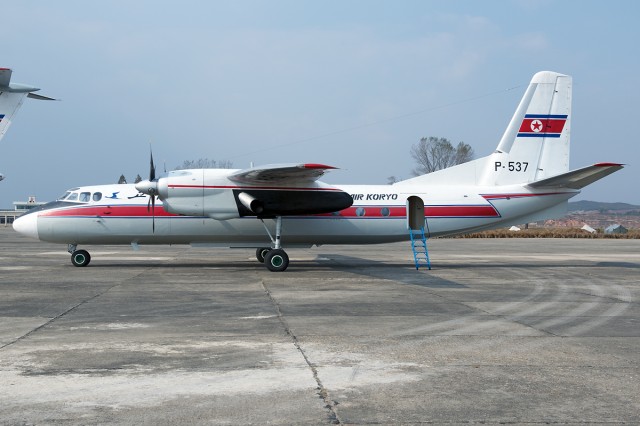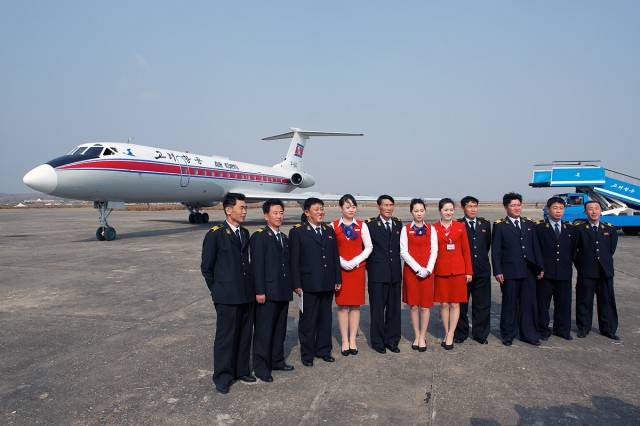
Air Koryo AN-24B (P-537) parked at Sondok
Antonov’s AN-24 is probably the easiest of the classic Russian aircraft to hitch a ride on. With at least 800 still in service in eastern Europe, central Asia, Cuba, and Africa, usually all it takes to fly one is a creative routing. Of course, none of those AN-24 are operated by Air Koryo, the national airline of North Korea.
The AN-24 is a stereotypical high-winged turboprop. More akin to the classic Dash-8s, rather than the newer Q400s. It was built to take off from nearly anywhere and land on the most ’œunprepared’ airfields Soviet surveyors and engineers could throw at it. P-537, the AN-24B I flew on, landed in Sondok shortly after my arrival flight via an Air Koryo IL-76.
We were not allowed to photograph the interior until after lunch in Hamhung, but were permitted to walk around the airframe and take plenty of photographs. After lunch, I fought my way to the front of the line to ensure that I would have the opportunity to take an unobstructed cabin shot. My patience and persistence paid off.

Air Koryo Tupolev TU-134 (P-814) with crew.
Read Bernie’s other Russian Metal reports of the Ilyushin IL-62 and the Ilyushin IL-18.
Andrei Tupolev was an engineering hero. When he saw that the Tu-124’s wingroot engines were sub-optimal for unpaved airfields and difficult to maintain, he decided to change it and create what would be the most prolific regional jet of the Warsaw Pact: the Tupolev Tu-134.
With most of the Russian airlines having replaced their Tu-134 with Canadair Regional Jets, once again- Air Koryo (airline code: JS) is your best bet to catch a ride. Flights within Democratic People’s Republic of Korea (DPRK) are always challenging to arrange. Not only do you need permission from the landing and departing airport, you also need permission to overfly every province and air defense district.
It turns out that ’œflying on a vintage Russian aircraft’ is not enough to satisfy the DPRK bureaucracy. As such, the tour guides always needed a more conventional ’œtouristy’ reason for the flights to be conducted for approvals to be granted quickly. On top of that, the guides had to be granted permission to leave Pyongyang months in advance.

